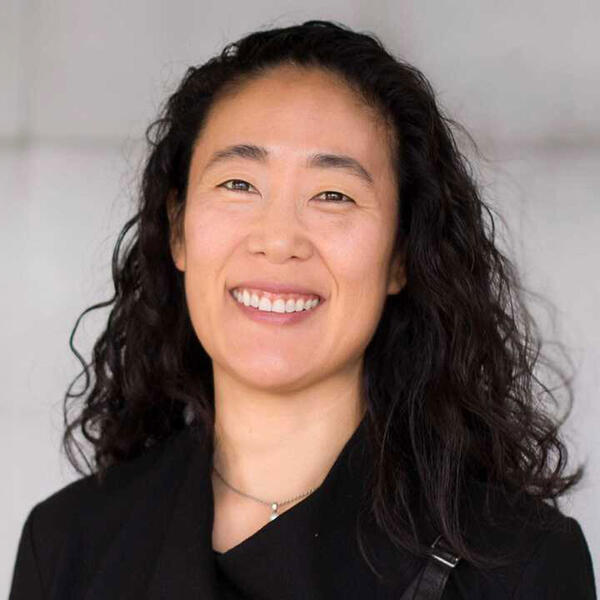
By
If you could create the Guide, what would be in it? What would be important elements to be included?
I’m a historian by training, so I’m always thinking about time. I think about how infinitesimally short my time on earth is compared to geologic time, and yet how significant one person can be in affecting others’ lives – particularly the lives of progeny and future generations.
So, whenever it comes to planning my work, I weigh these two things—the urgency of making sure every bit of my energy counts and influencing the future. Consequently, at the risk of sounding unkind, I’m less concerned these days about the difference I make in the lives of those I meet or know; rather, I’m deeply interested in the lives of all those I don’t know—those who will come after me and those who may feel the ripple effects of my actions.
I’m trained as an evaluator, so it’s ironic to me that I’ve set myself up to fail at measuring outcomes that are beyond my lifetime. Yet, the urgency of the needs of people and the planet move me beyond measurable outputs to instead work at levels more commensurate to the kinds social and environmental outcomes that we all need.
I share this because designing for the future requires a shift in framing. We’re all programmed to focus on the things that are right in front of us. It’s no wonder that thinking seven generations from now is challenging. The future will always be a stranger to us.
This future-focused framing is how I distinguish between transactional work and upstream activities. I would describe in very simple and broad brushstrokes the main sequence of using design thinking for future-oriented activities in the following way. (As a child of the 1980s, I structured the following steps like a Choose Your Own Adventure book, so Google this reference if it doesn’t make sense.)
- Imagine the archetype of a person or people you’re trying to help. Is it a first-generation college student of color? Is it a creative entrepreneur who is hustling to both make a positive impact and a living? How far into the future are you willing to go? Five years from now? Two unborn generations from now?
- Now imagine them in the future: What might be different in terms of their circumstances and environment than what you know now? For instance, according to a report by Prosperity Now and the Institute for Policy Studies, The Road to Zero Wealth: How the Racial Wealth Divide Is Hollowing Out America’s Middle Class (2017), if the racial wealth gap continues its current trajectory, the median wealth of African American households will be at zero by 2053, with the median wealth of Latinos at the same level just twenty years later. In other words, designing interventions under present circumstances may be rendered moot or ineffective without doing some research on trajectories and trends. One needs to know what one is up against, as well as knowing what trends might create favorable conditions to piggyback on. And, given the magnitude of this report’s findings – as but one example of challenging conditions – please calibrate up your ambitions and audacious goal-setting.
- At this point, you have three major choices to act on. You can choose to:
- Option A: Work on creating the conditions for that target population to succeed (you’ll need to describe “success,” of course);
- Option B: Work to ameliorate or solve one or more of the challenges that will make their lives harder in the future; or
- Option C: Work on piggybacking on current positive trends that might effect favorable conditions for that population in the future.
In my own experience, these are the characteristics of the choices:
Option A means you’ll be working at structural levels and is likely expensive and lifetime consuming. Examples of A is, for example, shifting corporate practices to move beyond only-for-profit behavior, which entails laws, regulations, culture, and a whole host of activities. This is the work, for example, of the nonprofit serving a global movement of people using business as a force for good called B Lab.
Option B is about fixing a problem and, depending on the size of the problem, can be a laser-focused project, such as passing legislation that makes it illegal for private companies to advertise on college campuses credit products with predatory interest rates.
Option C can operate at structural levels or be focused on a particular opportunity. For example, the current pressing need for a new social contract for independent workers means that the conditions are ripe for activities that range from universal basic income (structural level) to passing state-level portable benefits legislation (project level), both of which would have a long tail of future impacts.
What you won’t and shouldn’t see in your choices are activities that only benefit people here and now. In other words, with a future-oriented framework, your interventions won’t be transactional or one-offs. Instead, while your work will certainly help people immediately, your “true north” beneficiary populations are those in the future whom you don’t yet know and may never see.
About Angie Kim
Angie Kim is President and CEO of the California-based Center for Cultural Innovation. CCI supports individuals in the arts—individual artists, creative entrepreneurs, cultural producers, and arts workers. It also incubates projects addressing systems-level issues for artists and all those who share their conditions of debt, unpredictable work, lack of protections and benefits, and limited access to capital. Angie has expertise in grant-making as a program design and evaluation consultant, worked as a grant-maker at the Getty and Flintridge Foundations, and has been a university lecturer on the history of U.S. private philanthropy. She is a board member of California Humanities. She has degrees in Art History and a doctorate in Public Policy.